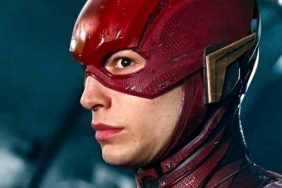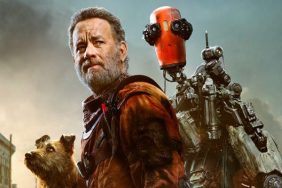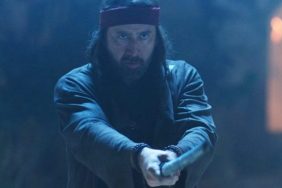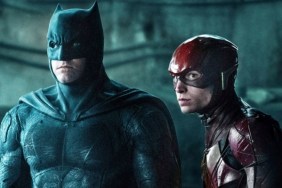There’s no real shortage of visionary filmmakers in the world, but few have had their particular vision of the future embraced so dramatically as George Miller. In his original “Mad Max” trilogy – Mad Max (1979), Mad Max 2: The Road Warrior (1981), and Mad Max Beyond Thunderdome (1985) – he foresaw a future in which resources dwindled, and marauders roamed the wastelands of civilization, fighting for the last remaining drops of oil. Moral collapse and punk outfits reigned supreme. His films cemented their place in the popular culture decades ago, and the long-awaited fourth entry – Mad Max: Fury Road – arrives in theaters on May 15, 2015.
We sat down with George Miller at SXSW 2015, where The Road Warrior screened in 35mm (a film Miller said he hadn’t seen in 32 years) followed by an extended preview of Mad Max: Fury Road, to discuss the origin of his post-apocalyptic visions, and the expansive world of Mad Max that audiences haven’t been able to see (yet). George Miller also explains why it’s so important to him that Fury Road was shot without CGI cars and stunts, and the sad reason why he barely remembers filming Mad Max Beyond Thunderdome at all.
CraveOnline: Some people might not understand how you can make a movie as great as The Road Warrior and then not see it for 32 years.
George Miller: Okay…
Do you just not like revisiting your own work, or had it not come up, or…?
Well, when you cut a film you’re watching it over and over again, and not only that you’re dreaming about it while you’re cutting it, and then you’re while you’re mixing the sound. So I’ve seen it thousands of times, and when you’re done, I always say you have to be spent. You have to be depleted by the time you finish the film. Otherwise you haven’t put all of yourself into it.
Makes sense.
So the last thing you want to do is go back and see it. So you see bits and pieces and so on, then after you’ve seen it a few times in the cinema, then it becomes the audience’s. It’s a fairly common thing to hear that. But having said that, it was one of the extraordinary experiences for me yesterday, because I’ve seen bits and pieces… in fact there was a wrap party [for Fury Road] in a biker bar for the visual effects people about two weeks ago in Sydney, they were playing bits and pieces there so I glanced across at it. But to see it with a newly minted print, in that theater, with an audience from beginning to end, as Drew [McWeeny] said, it was time travel. As close as I ever got to time travel.
It was such a great experience because it’s such an awesome movie. After so much time, was there stuff you forgot about the movie?
Yeah!
Tell me about that. Tell me about finding it again.
Well, one thing I think I mentioned last night, I really forgot that I’ve reference that movie so much unconsciously in [Fury Road]. When Max walks with that guy over his shoulders towards the compound, I thought, “Oh my God, Tom Hardy does that with Nic Hoult in the movie.” The gun thing I knew, the gun misfiring [which occurs in both The Road Warrior and Fury Road]. Other things… coming out of the sand, the guys chained to [the car]. Humongous holding Wez on the leash as it were. When Max was chained too.
I thought, “All this stuff is in my head! I’d completely forgotten.” I really had forgotten. But as I said last night, Fury Road is uniquely familiar. It will be very familiar but it’s definitely its own thing.









